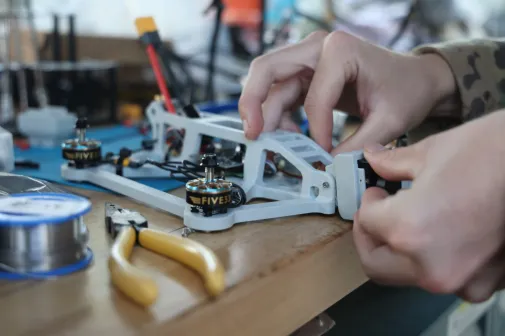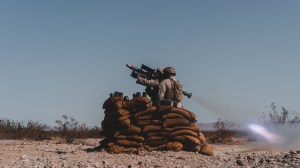Following first-of-a-kind military barracks, the National Guard hunts for new innovations to 3D print

The National Guard plans to increasingly apply 3D printing as an innovative, cost-effective solution to its military construction needs, according to senior officials.
“Last year, the Texas National Guard 3D-printed the first-of-its-kind military barracks,” Chief of the National Guard Bureau Army Gen. Daniel Hokanson told reporters on Tuesday.
During a press briefing at the Pentagon, Hokanson and his Senior Enlisted Advisor Chief Master Sgt. Tony Whitehead detailed their priorities for the guard in 2023 — and high on that list is reform through innovation with various emerging technologies.
One that’s already making waves for the branch (as well as other Pentagon components) is additive manufacturing, through which officials can construct three-dimensional objects with data computer-aided-design software or special object scanners that continue to advance.
“When you look at the importance of 3D printing, the ability to create just, say, parts of a piece of equipment, instead of storing it on the shelf or trying to get it one way or another — if you’ve got that 3D printer capable of making those parts, at the point of need, then just being able to make it when you need it, I think it’s one of those ways that we cannot only save money but become more effective and more efficient by having that ability to produce that stuff on hand,” Hokanson told DefenseScoop during the briefing.
Pointing to the recently completed barracks that were printed by Texas’ guard, Hokanson noted that at over 5,000 square feet, they house 72 soldiers — and were printed in 113 days. Then, he said, they were ultimately “ready for occupancy in 209 days, and at approximately 70% the cost of a conventional barracks.”
Hokanson has observed video footage and photos of the nascent barracks, and said he believes they are in use by guard members.
“But to us, when we look at the cost savings and the time at which, you know, we can’t help but take a look at this as a possible solution going forward. And this was really the first test, and then we’re looking for other applications where we can consider that,” he told DefenseScoop.
During the briefing, Whitehead confirmed that, on a recent trip down to Texas, he had the opportunity to visit the printed-out barracks there and the team that led the innovation.
“It’s amazing — the things that they’re teaching now to some of our newest soldiers and airmen that are coming in under STEM. And so [3D-printing] is probably going to be the wave of the future — not just, as we see it, as building the infrastructure — but those that are coming in that will be part of the conversation that will help it move forward,” Whitehead said.






